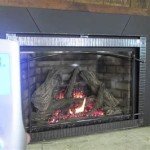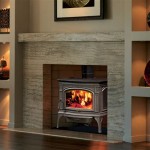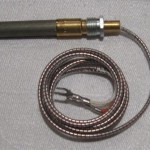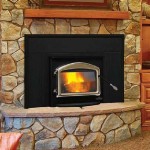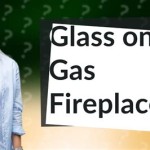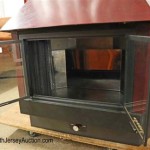DIY Natural Gas Outdoor Fireplace: A Comprehensive Guide
An outdoor fireplace can significantly enhance the ambiance of any outdoor living space, providing warmth, a gathering point, and an aesthetic focal point. Opting for a natural gas fireplace offers several advantages, including convenience, clean burning, and consistent fuel supply. While professional installation is always an option, a do-it-yourself (DIY) approach can be a cost-effective and rewarding project for homeowners with some construction and plumbing skills. This article provides a comprehensive guide to building a safe and functional natural gas outdoor fireplace, outlining the essential steps, materials, and safety considerations.
Understanding Natural Gas and Safety Precautions
Before embarking on a DIY natural gas project, a thorough understanding of natural gas and its associated safety precautions is paramount. Natural gas is a highly flammable substance, and any leaks can pose a significant fire or explosion hazard. Therefore, proper planning, meticulous execution, and adherence to safety guidelines are crucial throughout the entire project.
Local codes and regulations regarding natural gas installations must be consulted and followed. These codes typically specify requirements for pipe sizing, trench depth, venting, and inspections. Contacting the local building department or a qualified gas technician is essential to ensure compliance and obtain any necessary permits. Failure to comply with regulations can result in fines, project delays, or even safety hazards.
A qualified gas technician should always be consulted if there is any doubt or uncertainty regarding any aspect of the natural gas connection or installation. This expert can assess the existing gas line, determine its capacity, and advise on the appropriate pipe sizing and connections for the new fireplace. A licensed professional can also perform pressure testing to ensure the integrity of the gas line and identify any potential leaks.
Safety equipment is non-negotiable. A combustible gas leak detector is a vital tool for identifying even small leaks. Safety glasses and gloves are essential for protecting eyes and hands during construction. A fire extinguisher should always be readily available in case of an emergency. If any gas odor is detected, immediately shut off the gas supply at the meter and contact the local gas company or fire department. Do not attempt to locate or repair the leak without professional assistance.
Working with natural gas is inherently risky. If uncomfortable dealing with gas lines, hiring a qualified and licensed gas plumber is strongly recommended. Attempting a DIY project without the necessary skills and knowledge can lead to dangerous consequences.
Planning and Design
Careful planning and design are fundamental for a successful DIY natural gas outdoor fireplace project. The design should consider the available space, desired style, and functionality. A well-thought-out plan will minimize errors, ensure safety, and optimize the overall aesthetic appeal of the fireplace.
The location of the fireplace should be carefully chosen. Consider factors such as proximity to the house, prevailing wind direction, and potential obstructions. Ensure that the fireplace is located a safe distance from flammable materials, such as trees, bushes, and wooden structures. The location should also provide adequate ventilation to prevent the accumulation of carbon monoxide.
The design should reflect the homeowner's aesthetic preferences and complement the existing outdoor décor. Options range from traditional brick or stone fireplaces to more modern designs using concrete or metal. Consider the size and shape of the firebox, the height of the chimney, and the overall proportions of the fireplace. Online resources and design magazines can provide inspiration and ideas.
A detailed plan or blueprint should be created, outlining the dimensions, materials, and construction steps. This plan will serve as a guide throughout the project and help to ensure accuracy and consistency. The plan should also include a list of all necessary materials, including the type and quantity of brick, stone, mortar, gas pipe, fittings, and burner components. This detailed list helps to avoid unnecessary trips to the hardware store and ensures that all materials are readily available when needed.
The size and capacity of the gas burner should be carefully calculated based on the desired heat output and the size of the firebox. A burner that is too small will not produce enough heat, while a burner that is too large can be inefficient and potentially unsafe. Consult with a gas appliance specialist or refer to manufacturer guidelines to determine the appropriate burner size for the specific fireplace design.
Construction and Installation
The construction and installation phase requires meticulous attention to detail and strict adherence to the plan. Proper construction techniques and secure connections are essential for ensuring the safety and longevity of the fireplace. Shortcuts or substandard materials can compromise the structural integrity of the fireplace and increase the risk of gas leaks.
The foundation is the most critical element of the fireplace. It must be solid, level, and capable of supporting the weight of the structure. A concrete slab is generally the best option for a foundation. The slab should be poured to a sufficient thickness and reinforced with steel rebar to prevent cracking. The dimensions of the slab should be slightly larger than the base of the fireplace to provide adequate support.
The fireplace structure can be built using various materials, such as brick, stone, or concrete blocks. The chosen material should be durable, weather-resistant, and aesthetically pleasing. Mortar should be mixed according to the manufacturer's instructions and applied evenly to ensure a strong bond between the building materials. A level and plumb bob should be used to ensure that the walls are straight and vertical.
The gas line installation must be performed with extreme care. The gas pipe should be sized appropriately to provide adequate gas flow to the burner. Black iron pipe is typically used for natural gas installations. All joints should be threaded and sealed with gas-rated Teflon tape or pipe dope. A sediment trap should be installed upstream of the burner to prevent debris from entering the gas line. A shut-off valve should be installed in an easily accessible location to allow for quick shutoff of the gas supply in case of an emergency. The gas line should be buried at a depth that complies with local codes, typically 12 to 18 inches.
The burner unit should be installed according to the manufacturer's instructions. Ensure that the burner is properly positioned within the firebox and securely connected to the gas line. A spark igniter or electronic ignition system should be installed to facilitate easy lighting of the burner. The venting system, if required, should be properly installed to ensure adequate removal of combustion gases. The venting system should be sized and installed according to local codes and the manufacturer's instructions.
After the construction is complete, a pressure test should be performed on the gas line to check for leaks. A manometer or pressure gauge should be used to monitor the pressure. If any leaks are detected, they must be repaired immediately. A qualified gas technician should be consulted to perform or verify the pressure test and inspect the gas line installation.
Consider aesthetic enhancements. Fire glass, lava rock or artificial logs can be placed around the burner to create a visually appealing flame effect. Adding a decorative surround or mantel can further enhance the fireplace's aesthetic appeal.
Ultimately, building a DIY natural gas outdoor fireplace requires a considerable amount of planning, skill, and attention to detail. While it is a rewarding project, it is important to prioritize safety and adhere to all applicable codes and regulations. If there is any doubt or uncertainty, consulting with a qualified professional is always the best course of action.

How Do I Build A Diy Fire Pit For Natural Gas Starfire Direct

How To Build A Gas Fire Pit Woodlanddirect Com

How To Build A Gas Fire Pit Woodlanddirect Com

How To Plan For Building An Outdoor Fireplace
:max_bytes(150000):strip_icc()/free-outdoor-fireplace-plans-5113163-hero-0fa114a8e82e45aba4bba7186f6034c0.jpg?strip=all)
10 Free Outdoor Fireplace Construction Plans

How To Build A Gas Fire Pit Woodlanddirect Com

How To Build A Gas Fire Pit 10 Steps Outdoor Greatroom Greatrooms

60 Backyard And Patio Fire Pit Ideas Diffe Types With Photo Examples Outdoor Designs Seating Outside Pits

70 Best Diy Gas Fire Pit Ideas Outdoor

How To Make An Outdoor Gas Fireplace With Diy Pete
Related Posts

